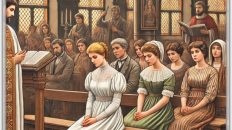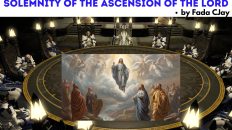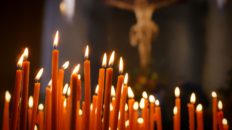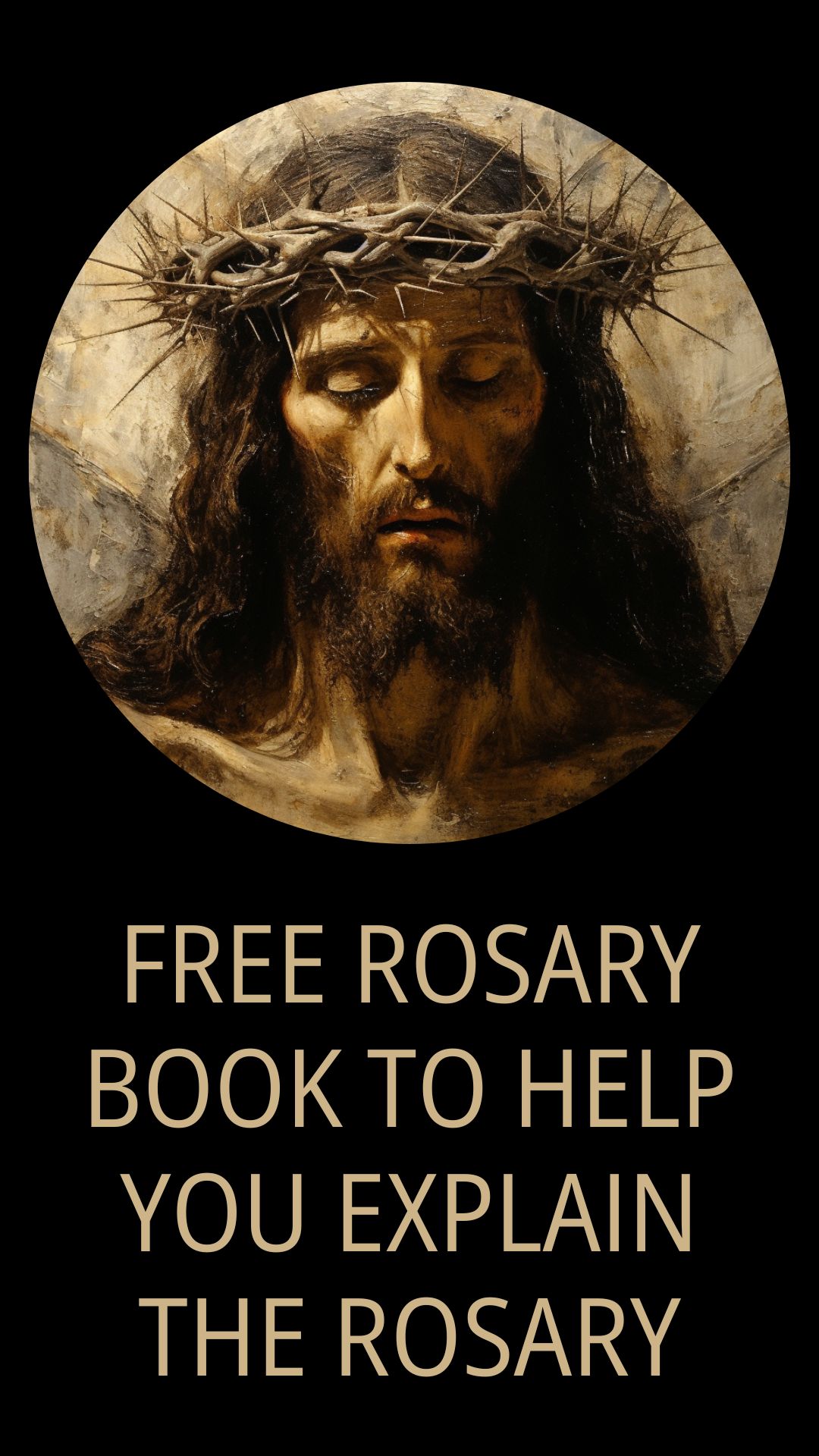Before now, little was known of the Notre Dame Cathedral to the common man; however, with the sad news of the catastrophic fire outbreak which engulfed part of the structure, the world’s attention has been directed to the Cathedral; consequently, many began to raise questions about some images of scary animals and other figures found around and above the Cathedral structure, and hastily concluding and condemning the Catholic Church of idolatry, and immediately quoting the Book of Exodus chapter 20, where God commanded us not to make any graven thing or images. Someone even said “Hmmmm na wa o, how on earth can an average catholic defend this image that looks just like that of the powerful illuminati cult group? It would have been better if it were a statue of angels, Cherubim, saints etc., but this very one depicts and connotes the devil himself.” Another said: “what could the image of satan be doing in the house of God? These images are really scary to the adults talk more of the little children. What pictorial view/representation could this be in the minds of little children both then and now? I even saw one of those statues online this afternoon that really pissed me off going by what it connotes because I wasn’t just comfortable with it in any way.” Dear friends in Christ, I dare to say that these reactions are undoubtedly fed by absolute ignorance of Arts (Architecture), History and the Word of God. Now the question: Is this Idolatry on the part of Catholics?
To begin with, I would like to immediately say that the images found around Notre Dame Cathedral are not images of satan, but they’re gargoyles. In architecture, a gargoyle is a carved or formed grotesque (a very ugly or comically distorted figure, creature, or image) with a spout designed to convey water from a roof and away from the side of a building, thereby preventing rainwater from running down masonry walls and eroding the mortar between. Gargoyles were commonly used in medieval times. Their two main purposes were to scare off evil, and to divert rainwater. … The word “Gargoyle” originates from the old French word “Gargouille” meaning “throat” but which also describes the gurgling sound of water as it is coming down the downspout. It would interest us to know that some of the most famous gargoyles in the world sit atop cathedrals, (as observed in Notre Dame in Paris). Some experts believe they were popular on churches because of the widespread belief that they scare away evil spirits. Therefore, they have a symbolism of watching over Paris since the Notre Dame was erected in 1163.
But then, why the images of fiery-looking creatures to serve as protection or ward off evil spirits? When we begin to point questions like this, we must immediately remember that these figures serve a spiritual importance. Beginning with the Bible, we know that the devil is often depicted with the figure of a fierce serpent or dragon, but then, why did God command Moses to construct/mould the image of a bronze Serpent (which often depicts the devil) to serve as a healing remedy to those who had been bitten by the serpent? In Numbers 21:8-9, we read: “And the Lord said to Moses, ‘Make a fiery serpent and set it on a pole, and everyone who is bitten, when he sees it, shall live.’ So Moses made a bronze[a] serpent and set it on a pole. And if a serpent bit anyone, he would look at the bronze serpent and live.” Does it mean that God was confused? Or that Moses and the Israelites were idolatrous by this act? Why was this so? Apart from depicting the devil, the serpent in the Mediterranean culture has a positive dimension, for it depicts healing. Anyone who condemns Catholics because of the images at Notre Dame should also condemn God for asking Moses to make an image of a bronze serpent, and even venerate it by looking upon it reverently in order to be healed of the poisonous effects of the snakebites in the desert. God has not ceased to ask his people to make images. Besides, in the gospel, our Lord Jesus compared Himself to the bronze serpent (cf. John 3:14). I dare to say that this analogy closely resembles the process and act of immunization. How do I mean? Many of us had been immunized at infancy from various life-threatening diseases. At birth, new-born babies are often immunized against Chickenpox, Diphtheria, tetanus, whooping cough, Hepatitis A, Hepatitis B, Influenza. (Flu), Measles, mumps, rubella (MMR), Meningococcal, etc. if not immunized, these diseases could pose a threat to life as they grow up. How is immunization brought about? Speaking as a layman in this area, I can say that immunization is brought about by obtaining a particular virus, let’s say “measles” (for instance), and passing it through a process in the laboratory, consequently killing the virus. This dead or lifeless virus is then introduced into the body, and it would begin to serve as a protection and ward off its very brother virus – (the active measles in the environment trying to gain access into the body), as such, the person would not be inflicted by the disease of measles. Similarly, the lifeless bronze serpent in the wilderness which Moses made was able to heal the diseases inflicted on the Israelites by the snakes who had bitten them. Analogously, when Jesus died on the cross, this served as a spiritual immunization for us all. How? We had been destined to eternal death because of our sins, but the death of Jesus on the cross served as a spiritual immunization for us, and so, we were redeemed and saved. Thus, He killed eternal death and sin by his very death, as such death has no sting again. Little wonder Saint Paul would say: “O death, where is thy sting? O grave, where is thy victory? The sting of death is sin, and the strength of sin is the law. But thanks be to God who has given us victory through our Lord Jesus Christ.” (1 Cor 15:55-57). This explains ordinarily, why the devil cannot withstand the image of the cross with the crucified Jesus on it. This could be explained as a spiritual immunization; the image of the crucified Jesus posing a threat to sin and death brought about by the devil.
Returning to the issue of images or statues and icons of Jesus, the Blessed Virgin Mary, the saints etc. in general, a look at the Old Testament reveals similar images of angels and other things in the Temple built by the Jews. We see that the inner sanctuary of the Temple contained two large statues of angels according to 1 Kings 6:23-28. In the following verses, Solomon also had the walls of the Temple decorated with carved images of angels, palm trees and flowers (1 Kings 6:29ff). During the Babylonian Captivity, Ezekiel had a vision from God about the design of the new Temple. According to Ezekiel 41:17-25, this new Temple contained graven images of angels and palm trees. These passages in the Bible indicate that God does not forbid the making of statues. If God truly condemned the making of graven images.
Returning to the fierce images seen at Notre Dame, and in relation to the explanations already proffered above, we come to see that the Catholic Church’s primary use of the gargoyle was to illustrate evil. The Church wanted to convey a realistic image of the possibility of a damned afterlife. The Gothic idea was one of pain and suffering and the buildings loomed over the citizens in a romantically dramatic cloud. The gargoyles are represented by monsters to insinuate safety and sanctity inside of the cathedral. If these images are considered so scary and evil in themselves, what can we say of the figures seen in heaven as described by the visionary, Saint John? In Revelation 4:6-7, we read: “…In the centre, around the throne, were four living creatures, and they were covered with eyes, in front and in back. The first living creature was like a lion, the second was like an ox, the third had a face like a man, the fourth was like a flying eagle. Each of the four living creatures had six wings and was covered with eyes all around, even under its wings.”
Dear friends in Christ, we have to be careful not to read evil in everything. We were told that “everything God made was good” (Cf. Gen 1:31, 1Tim 4:4). That the devil chooses to manifest himself through some ugly creatures (snakes, cats, lion, owl, dragon etc.) does not render these creatures bad in themselves. We need to work on our minds. Making images is not what the Bible condemns, the Bible condemns the adoration of these images as gods. Therefore, inasmuch as we have these images in and around the Church, the Church strictly condemns the adoration (divine worship) of them, since this is idolatry and in direct violation of the First Commandment.
Still, the critics of the Catholic Church would claim that, while Catholics may say they do not adore statues, their actions prove otherwise… Catholics kiss statues, bow down before them and pray in front of them. According to the protestants, that represents the adoration that is due to God alone. How do we explain this? The problem was not with the bowing; it was with the adoration. Bowing does not necessarily entail adoration. For example, Jacob bowed to the ground on his knees seven times to his elder brother Esau (Gen. 33:3), Bathsheba bowed to her husband David (1 Kgs. 1:16), and Solomon bowed to his mother Bathsheba (1 Kgs. 2:19). In fact, in Revelation 3:9, John records the words of Jesus: “Behold, I will make those of the synagogue of Satan who say that they are Jews and are not, but lie—behold, I will make them come and bow down before your feet, and learn that I have loved you.” This simply indicates that there are different categories of “bow” or “worship” as clearly seen in the examples above. We have the LATRIA which is the adoration due to God alone; this is clearly different from the relational worship or we give to ourselves to indicate respect. This is very clear with the Yoruba culture of Nigeria, where a child prostrates or lies down to greet an elder. This does not mean that he is rendering the elder Latria worship or guilty of idolatry, however, it is just a “relational worship” which indicates respect. HENCE, WE MUST KNOW THAT THE IDEA OF “WORSHIP” IS VERY BROAD AND ITS USAGE MUST FLOW WITH THE PROPER SENTIMENT WHICH INDICATES WHAT IT REALLY MEANS.
My humble recommendation remains that the Catholic Church believes that these statues/images and icons move us to the contemplation of the Word of God as He is Himself or as He works in his Saints. And, according to the Scripture, as well as the testimony of the centuries, God even uses them at times to impart blessings and protection (e.g., healings) according to his providential plan.
In conclusion, I suppose the message we should send to those outside of the Catholic Church who don’t get why we bow down before, kiss, put flowers in front of these images, statues and icons, is that we Catholics take very seriously the biblical injunctions to praise and honour great members of God’s family (remember your leaders who spoke the word of God to you, as you reflect on the outcome of their lives, imitate their faith. Cf. Hebrews 13:7). Besides, it is, however, surprising that the critics of the Catholic Church take photographs (of their family members, friends, animals etc., hang it at home and often times kiss them. Hence, following the command not to make any image at all, 99% of them equally guilty of idolatry, if we are to take that portion of the Scripture so literarily. For us, having statues or images is just as natural as—you guessed it—having your pictures or those of your loved ones, especially those that have departed from us. Most times we keep these images or pictures of our relations in our wallets or at homes or even in our electronic devices, which remind us of the ones we love here on earth. Hence, our use of images in the Church which reminds us of the heavenly beings is a far cry from idolatry.
Please share this post…
Shalom!





Thank you Fr for this elaborate analysis. It’s so enriching.